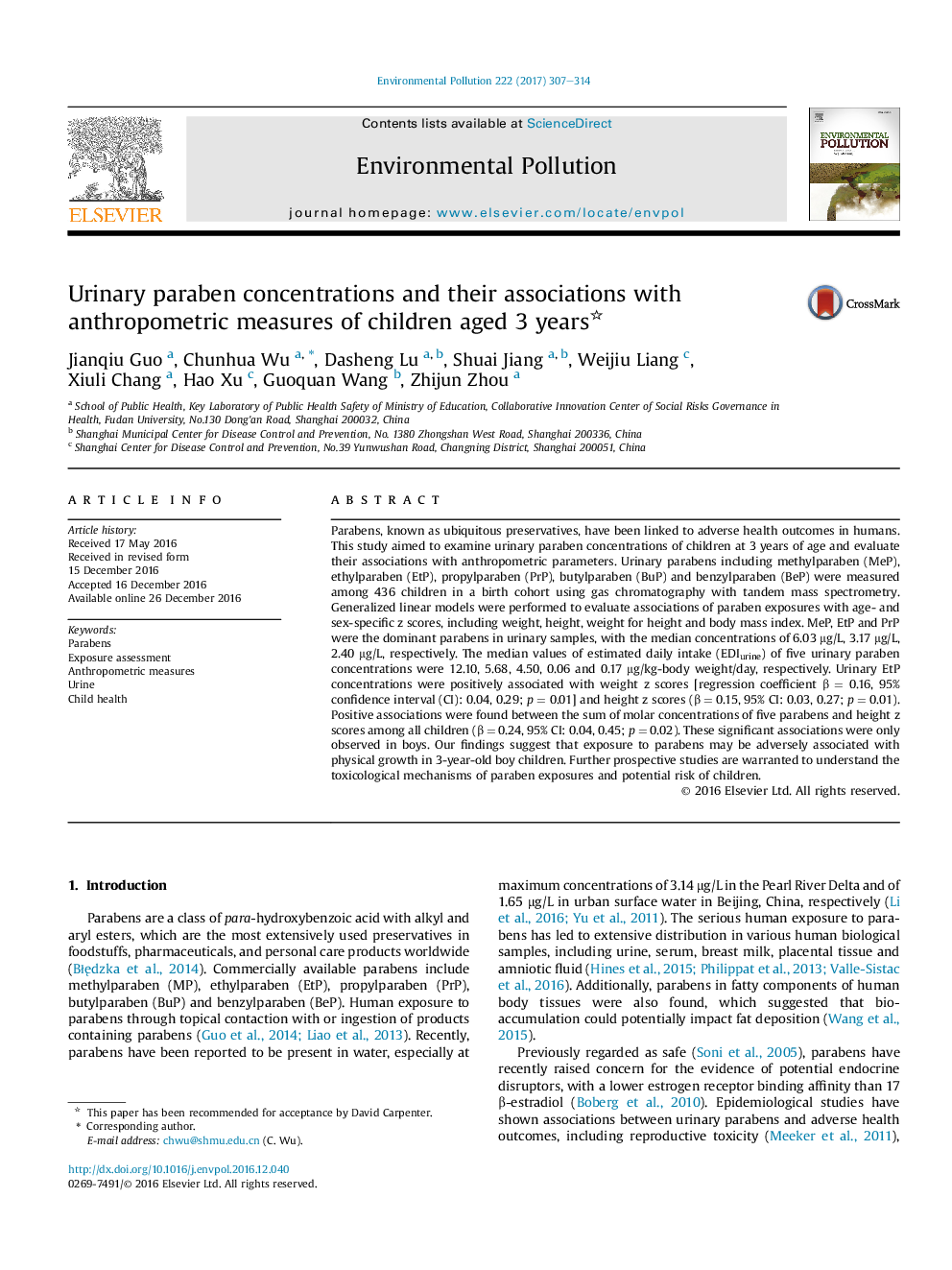| Article ID | Journal | Published Year | Pages | File Type |
|---|---|---|---|---|
| 5749024 | Environmental Pollution | 2017 | 8 Pages |
â¢Five paraben concentrations were analyzed in urine samples from 436 children.â¢Associations between urinary paraben concentrations and anthropometric measures of children were examined.â¢Urinary ethylparaben concentrations were significantly positively associated with weight z scores.â¢Positive associations of paraben exposures with anthropometric measures were only observed among boys.
Parabens, known as ubiquitous preservatives, have been linked to adverse health outcomes in humans. This study aimed to examine urinary paraben concentrations of children at 3 years of age and evaluate their associations with anthropometric parameters. Urinary parabens including methylparaben (MeP), ethylparaben (EtP), propylparaben (PrP), butylparaben (BuP) and benzylparaben (BeP) were measured among 436 children in a birth cohort using gas chromatography with tandem mass spectrometry. Generalized linear models were performed to evaluate associations of paraben exposures with age- and sex-specific z scores, including weight, height, weight for height and body mass index. MeP, EtP and PrP were the dominant parabens in urinary samples, with the median concentrations of 6.03 μg/L, 3.17 μg/L, 2.40 μg/L, respectively. The median values of estimated daily intake (EDIurine) of five urinary paraben concentrations were 12.10, 5.68, 4.50, 0.06 and 0.17 μg/kg-body weight/day, respectively. Urinary EtP concentrations were positively associated with weight z scores [regression coefficient β = 0.16, 95% confidence interval (CI): 0.04, 0.29; p = 0.01] and height z scores (β = 0.15, 95% CI: 0.03, 0.27; p = 0.01). Positive associations were found between the sum of molar concentrations of five parabens and height z scores among all children (β = 0.24, 95% CI: 0.04, 0.45; p = 0.02). These significant associations were only observed in boys. Our findings suggest that exposure to parabens may be adversely associated with physical growth in 3-year-old boy children. Further prospective studies are warranted to understand the toxicological mechanisms of paraben exposures and potential risk of children.
Graphical abstractDownload high-res image (292KB)Download full-size image
